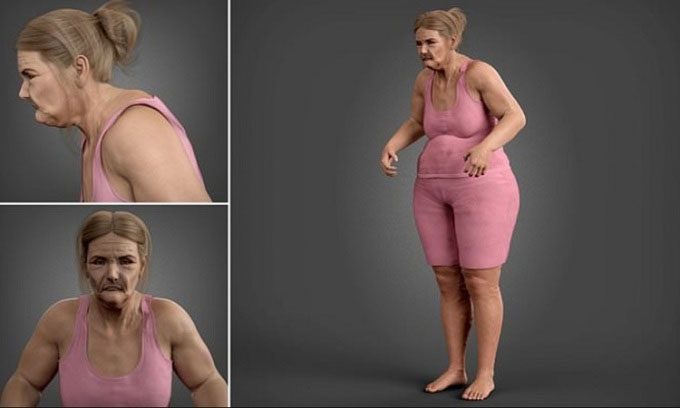Using electronic devices for extended periods and not working in appropriate environments could significantly alter the physical appearance of remote workers in the future.
Experts at Furniture At Work have predicted the appearance of remote workers in the year 2100. Their model named Anna features a hunched back, dark circles under her eyes, puffy eyelids, and claw-like hands due to working from home. Anna illustrates various physical impacts resulting from continuous technology use, screen exposure, poor posture, and potential mental health issues.

The Anna model reflects changes in the appearance of remote workers. (Photo: Furniture At Work).
The team that created Anna did so after a University of Leeds study discovered that one-third of home workers in the UK do not have suitable workspaces at home. To showcase the impact of this, Furniture At Work utilized scientific research and collaborated with healthcare professionals to predict the future appearance of remote workers.
Working from bed has a significant effect on Anna, causing a hunchback and elevated shoulders. Meanwhile, staring at a screen all day leads to red, swollen eyes. Prolonged mouse use causes fingers to curl into claw-like shapes. Anna is also overweight and has a weakened immune system due to limited exposure to fresh air, along with anxiety and depression.
Based on these findings, health experts recommend that home workers take protective measures for their health. According to Brian Clark, founder of United Medical Education, remote workers should take regular breaks to stretch and move their bodies to avoid back pain and neck strain.
Sarah Gibson, director of Proactive Healthcare, suggests following the 20-20-20 rule to protect the eyes if one must stare at a screen for long periods: take a 20-second break after every 20 minutes of screen time and focus on something 20 feet (6 meters) away. If you frequently work from home, Clark emphasizes the need to arrange a workspace that is appropriately furnished with optimal specifications.





















































